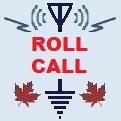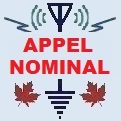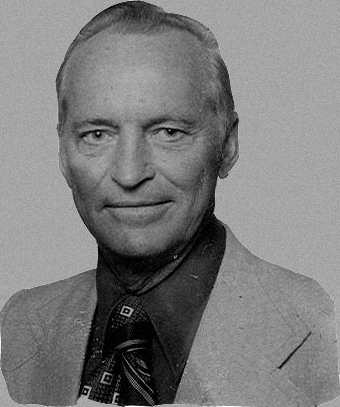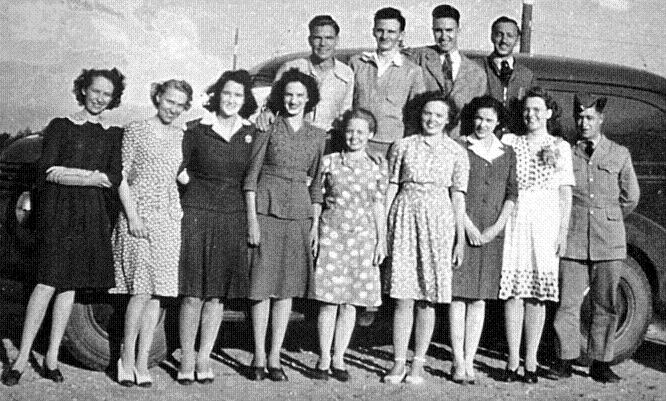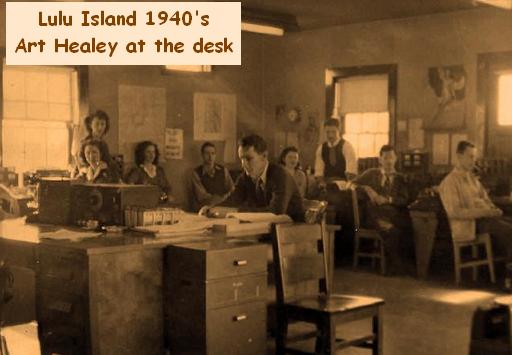|
|
RADIOALUMNI.CA |
|
|
CANADIAN EPICS IN RADIOCOMMUNICATION ALUMNI WHO LIVED THE ADVENTURE OF RADIO WIRELESS TELEGRAPHISTS - SPARKS - RADIO PIONEERS RADIO OPERATORS - RADIO TECHNICIANS RADIO TECHNOLOGISTS - RADIO ENGINEERS RADIO INSPECTORS - SPECTRUM MANAGERS |
|
ÉPOPÉES CANADIENNES EN RADIOCOMMUNICATION LES ANCIENS QUI ONT VÉCU L'AVENTURE DE LA RADIO TÉLÉGRAPHISTES SANS FIL - PIONNIERS DE LA RADIO OPÉRATEURS RADIO - TECHNICIENS RADIO TECHNOLOGUES RADIO - INGÉNIEURS RADIO INSPECTEURS RADIO - GESTIONNAIRES DU SPECTRE |
one of them ... ( VE4QR )
Arranged for the web from personal correspondence 2006-2009
In 1942 , Eric was first assigned to the Winnipeg Monitoring Station which had been relocated from the small town of Forrest, Manitoba early in the war.
As at the other stations across Canada it was involved in interception of enemy radio signals – to copy marine traffic primarily, particularly from German coast stations and with a high interest in U-boat signals. Additionally some neutral country ships were monitored for position reports as there was some suspicion that some of these ships were re-supplying and refueling German.
On the rare occasions when a submarine signal was intercepted, it also meant to obtain Direction finder bearings - transmissions from subs were of very short duration and only consisted of a few code groups so speed at obtaining a bearing was required. Staffing at the station was about thirty two operators working 8 hour shifts.
Late in 1944, after the U-boat problem was somewhat diminished, some of the interception work was transferred to the Japanese war and this entailed the copying of Kana code. This code consisted of 56 characters in lieu of our 26 and consequently was only printable using two of our letters - this consisting normally of a consonant followed by a vowel.. While our alphabet is made of up to four dot/dash combinations, KANA code was primarily composed of five dot/dash combinations and some of up to six. While this may appear difficult, it was a fairly easy transition for operators proficient in the copy of normal code signals and many Japanese stations were operating at a fairly slow transmission speed. A standard keyboard typewriter was utilized at all Canadian stations and it was not considered an advantage to acquire the Navy developed typewriter with a keyboard designed for Kana code. ( The KANA code )
Change of shift at the Winnipeg Monitoring Station during World War II
Since there was an advantage for reception of Japanese signals at the west coast it was decided to increase staffing at the Lulu Island Monitoring Station (Point Grey had been the original monitoring station at the west coast and continued to operate – Lulu Island was established specifically as an interception station).
Early in 1945 Operators from a number of monitoring stations across Canada were transferred to that location. Some of the Japanese transmissions were now at high speed and it was necessary to record the signals and replay at a slower speed. This was much prior to development of tape recorders and recording was done on cylinders rather than flat discs as used in the mechanical phonograph in use at that time. The recording quality was extremely poor but adequate for code.
Eric and some of the operators were then transferred to a station on Lulu Island (Vancouver) to copy this Japanese Kana code.
But the work of intercepting Kana code was of short duration as the war in the Pacific ended in August 1945 and most of the monitoring operators were relocated primarily to Radio Range Stations across the Regions. Eric was then transferred to Lethbridge and later to North Battleford.
In 1951 following the retirement of Harold Tee , Eric obtained a Radio Inspector position in Regina (not a desirable job at that time since part of the work was dealing with Broadcast receiver licensing and prosecutions but at least it was the end of shift work).
In the early 50's, each province had a supervising Radio Inspector reporting directly to HQ in Ottawa. Fortunately Broadcast receiver licensing was discontinued at the end of 1953.
Continuing, in 1954 the Radio Regulations division was reorganized into Regions corresponding to the other divisions of the Dept. of Transport and Eric was transferred to the Winnipeg Regional office and became the Regional Supt. in 1964.
Radio Regulations separated from DOT in 1969 and the Central Region was established in the Dept. of Communications with new boundaries which included Manitoba, Saskatchewan, Alberta and most of the NWT. In addition to eight District Offices it had responsibilities for Monitoring Stations at Melville, Wetaskiwin, and Fort Smith as well as Ionospheric stations at Resolute Bay, Baker Lake, Churchill and Headingly.
Work in Spectrum Management was always interesting to him. In those years, much of the licensing and frequency allocations had been decentralized to the Regions and required contacts with all agencies making use of the spectrum. Changes in electronic technology had been dramatic during his working period and went from elementary vacuum tubes to solid state and integrated circuitry with color TV, Microwave, Satellites and cell phones.
Eric retired in 1978 after 36 years and continued with some travel, golf, curling and amateur radio (VE4QR)
Acknowledgements: Photos with thanks to Ed Good and Lorne Greenwood.
|
||||||||||||||||||||||
|
Related Links History of Monitoring Stations in the Pacific Region
|
||||||||||||||||||||||



